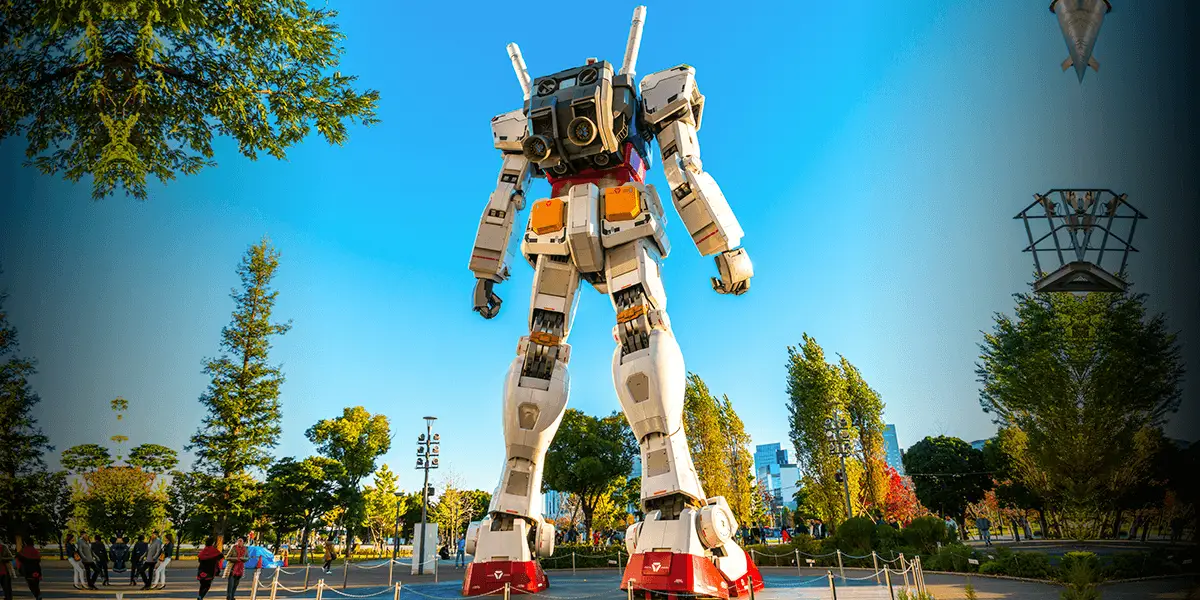AI for Cultural Heritage: Preserving the Past with Technology

Artificial intelligence (AI) is a rapidly evolving field that is finding applications in a wide variety of industries, including cultural heritage. AI can be used to preserve and protect cultural heritage in a number of ways, such as:

- Digitizing cultural artifacts: AI can be used to digitize cultural artifacts, such as manuscripts, paintings, and sculptures, making them more accessible to researchers and the general public. This can help to preserve these artifacts for future generations and prevent them from being lost or damaged.
- Analyzing cultural data: AI can be used to analyze cultural data, such as text, images, and audio, to identify patterns and relationships that would be difficult or impossible for humans to find. This can help researchers to gain new insights into the history and significance of cultural artifacts and to develop new ways to interpret and present them.
- Creating virtual reality and augmented reality experiences: AI can be used to create virtual reality (VR) and augmented reality (AR) experiences that allow people to explore cultural heritage sites and artifacts in a realistic and immersive way. This can help to bring cultural heritage to life and make it more accessible to people who are unable to visit these sites in person.
- Protecting cultural heritage from theft and damage: AI can be used to protect cultural heritage from theft and damage. For example, AI-powered surveillance systems can be used to monitor cultural heritage sites and alert authorities to any suspicious activity. AI can also be used to develop new ways to detect and prevent the trafficking of cultural artifacts.
AI is a powerful tool that can be used to preserve and protect cultural heritage in a number of ways. As AI technology continues to develop, we can expect to see even more innovative and effective ways to use AI for this purpose.

Here are some specific examples of how AI is being used to preserve and protect cultural heritage:
- The Metropolitan Museum of Art in New York City is using AI to digitize its collection of more than 2 million works of art. This project is expected to take 10 years to complete, but it will make the museum’s collection more accessible to researchers and the general public around the world.
- The British Museum in London is using AI to analyze its collection of ancient Egyptian artifacts. This project is helping researchers to gain new insights into the history and significance of these artifacts.
- The Smithsonian Institution in Washington, D.C., is using AI to create a virtual reality experience that allows people to explore the National Mall. This experience allows people to see the Mall’s iconic buildings and monuments up close and to learn more about their history.
- The World Monuments Fund is using AI to protect cultural heritage sites from theft and damage. The organization’s AI-powered surveillance system monitors cultural heritage sites for suspicious activity and alerts authorities if anything unusual is detected.
These are just a few examples of how AI is being used to preserve and protect cultural heritage. As AI technology continues to develop, we can expect to see even more innovative and effective ways to use AI for this purpose.# AI For Cultural Heritage: Preserving The Past With Technology
Executive Summary
As time goes on, cultural heritage faces numerous threats, including natural disasters, human negligence, and malicious destruction, making it imperative to develop innovative preservation strategies. Among these strategies, artificial intelligence (AI) plays a prominent role. AI has revolutionized many industries in recent years, and its applications in cultural heritage are vast and promising. In this comprehensive article, we explore the intersection of AI and cultural heritage, highlighting the benefits, considerations, and emerging trends in this rapidly evolving field.
Introduction
Throughout history, cultural heritage has served as the foundation upon which societies build their identity, values, and connection to the past. Yet, as time takes its toll, these precious assets face an array of threats, from natural disasters to human-induced degradation. Fortunately, advancements in technology, particularly in the realm of artificial intelligence (AI), offer exciting avenues to combat these challenges and revitalize our collective heritage.
AI in Cultural Heritage: Subtopics of Interest
1. AI for Documentation and Archiving
Digitization and Preservation: By digitally capturing and preserving cultural artifacts, AI enables them to endure the ravages of time and natural disasters. These records provide valuable data for historical research and enhance access to cultural heritage for a global audience.
- Optical Character Recognition: AI allows efficient scanning and automatic text extraction from ancient artifacts, historic documents, and fragile manuscripts.
- Image Recognition and Categorization: Algorithms empower computers to identify visual patterns, enabling automatic identification, classification, and analysis of diverse cultural artifacts.
- Speech Recognition: This technology helps transcribe oral traditions, folklore, and historical narratives, capturing the essence of cultural heritage in audio-visual formats.
2. AI for Data Analysis and Research
Pattern Recognition and Predictive Analytics: AI algorithms can distill patterns and anomalies from vast volumes of cultural data, aiding scholars, historians, and archaeologists in identifying significant connections, trends, and predictive insights into past societies and cultures.
- Automated Historical Analysis: Natural Language Processing (NLP) enables AI models to extract insights from historic texts, including sentiment analysis and the extraction of sentiments, topics, or socio-political dynamics.
- Digital Paleontology and Archaeology: By analyzing visual data from imagery and other digital archives, AI can accelerate the process of fossil identification, artifact classification, and stratigraphic analysis.
3. AI for Conservation and Restoration
Predictive Maintenance: AI systems analyze environmental factors and the condition of artifacts to predict deterioration or damage risks. Timely interventions can prevent further degradation.
- Condition Analysis: AI-based automated assessment of cultural assets’ condition can prioritize restoration efforts, optimize resource allocation, and guide conservators’ decisions.
- Enhanced Restoration Techniques: Advanced modeling techniques aid conservators in simulating restoration outcomes, reducing the trial-and-error process and minimizing the risk of altering the original artifact.
4. AI for Virtual and Augmented Reality Experiences
Interactive and Immersive Cultural Sites: AI technologies support the development of interactive and engaging virtual tours of cultural sites, making cultural heritage accessible to a wider audience.
- Historical Re-enactments: Computer-generated immersive simulations allow people to virtually experience and interact with historical events, sites, and figures, creating a deeper understanding of the past.
- Interactive Digital Exhibits: AI powers digital interactives in museums and cultural institutions, enriching exhibition experiences, and enhancing understanding of artifacts and their context.
5. AI for Cultural Heritage Education and Outreach
Personalized Learning: AI algorithms can create tailored learning experiences, tailoring content and recommendations to individual interests, promoting engagement, and knowledge retention.
- Digital Storytelling: With AI text-to-speech applications, cultural institutions can provide visitors with compelling narratives about displayed artifacts, adding context and fostering engagement.
- Cultural Heritage Games: Interactive, AI-driven games simulate historical events and cultural traditions, presenting them in an engaging and educational manner, promoting a deeper appreciation of the past.
Conclusion
The fusion of AI and cultural heritage has the potential to revolutionize the preservation, exploration, and enjoyment of our cultural heritage. AI technologies augment the capabilities of experts by automating tedious tasks, enhancing analysis, and fostering innovation. Partnerships between cultural institutions, technologists, and scholars will be crucial to unlocking the full potential of AI in cultural heritage, ensuring that future generations inherit a world richer in both physical and virtual cultural treasures.
Keyword Phrase Tags
- Artificial Intelligence
- Cultural Heritage Preservation
- Digitalization and Archiving
- Virtual and Augmented Reality
- AI-Powered Educational Tools

Fascinating stuff! Never thought about using AI this way. Wonder what possibilities this opens up for other fields?
Sounds too good to be true. AI can’t replace the human touch when it comes to preserving cultural heritage.
This article provides an interesting overview of AI’s potential in cultural heritage preservation. Noteworthy advancements in image processing and data analysis are highlighted.
While AI has its uses, I don’t believe it should play a significant role in cultural heritage preservation. It lacks the necessary understanding and appreciation for the subject matter.
Oh, so now AI is going to save our precious cultural heritage? How very convenient when we’ve been neglecting it for years.
Sure, let’s trust AI with preserving our cultural heritage. It’s not like it has a tendency to misinterpret or distort information.
Next thing you know, AI will be writing sonnets about ancient artifacts and painting Mona Lisas of lost civilizations.
I’m optimistic about the potential of AI in cultural heritage. It could help us uncover hidden treasures and make history more accessible to a wider audience.
While I understand the potential benefits, I worry about the ethical implications of using AI in cultural heritage preservation. Who owns the data? Who decides what’s preserved and what’s not?
This is truly groundbreaking stuff! AI can empower us to explore and interact with cultural heritage in ways we never thought possible.
It’s important to note that AI is not a replacement for human experts in cultural heritage preservation. It’s a tool that can enhance our understanding and capabilities.
AI in cultural heritage preservation? Sounds like a recipe for disaster. It’s just another way for technology to take over and ruin our appreciation for the past.
This article raises some valid concerns and opportunities. AI in cultural heritage preservation is a double-edged sword. It’s crucial to navigate its potential responsibly.
Wow, the possibilities are endless! AI could revolutionize how we research, document, and share our cultural heritage with future generations.
I’m not sure how I feel about AI messing with our history. It’s like playing with fire. What if it gets into the wrong hands or starts making unauthorized changes?